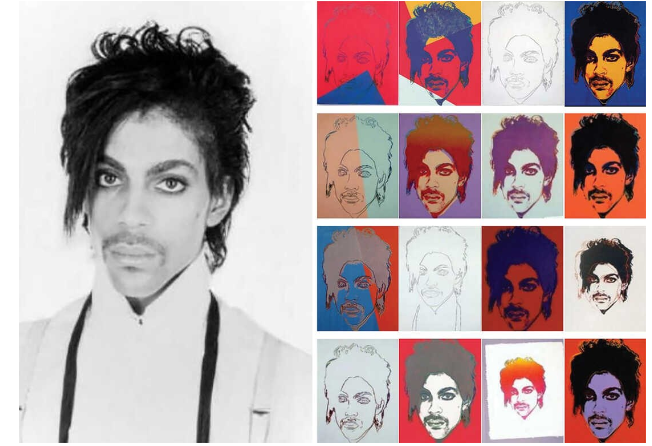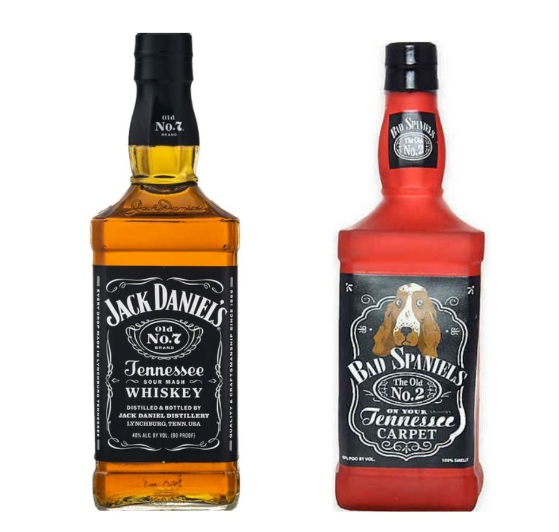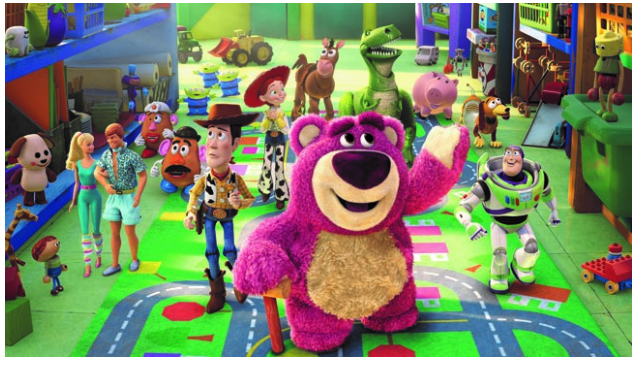
2023 is shaping up to be a chaotic calendar year for the Supreme Court docket as it relates to addressing concerns relating to copyright, trademark, and patent law. This primer offers a preview of the a variety of issues the Supreme Courtroom will or may possibly choose in the coming yr.
The Challenges the Supreme Court docket Will Make a decision
Last calendar year, the Supreme Court agreed to take 4 situations involving intellectual house-related concerns. The Supreme Court is anticipated to issue rulings on most, if not all, of these difficulties in 2023.
Transformative Honest Use: In Oct 2022, the Supreme Courtroom held oral argument in Andy Warhol Basis v. Goldsmith. The situation involves an attractiveness from the 2nd Circuit, which held that Andy Warhol’s Prince Collection was not truthful use of an fundamental copyrighted photograph of the artist Prince taken by Lynn Goldsmith in 1981.
Picture: NPR, “The Supreme Court meets Andy Warhol, Prince and a case that could threaten creativity” (Oct. 12, 2022)
The 2nd Circuit reasoned that Andy Warhol’s Prince Series taken care of all essential features of the fundamental copyrighted product and, therefore, was not sufficiently transformative. In carrying out so, the Next Circuit downplayed the Supreme Court’s modern transformative honest use ruling in Google v. Oracle, indicating that the test for whether or not anything is adequately transformative need to vary primarily based on the medium.
As Vorys formerly indicated, this situation will provide the Supreme Court docket with the chance to make clear regardless of whether the standards for fair use must vary amongst the program realm and the visible arts, which could dispel infringement shadows from Warhol’s other is effective, and the pop artwork style in normal.
Enablement and Undue Experimentation: The Supreme Court docket is established to listen to oral argument later on this yr in Amgen Inc. v. Sanofi. When it does, it will be only the 2nd time the Supreme Court has reviewed the enablement necessity of 35 U.S.C. § 112.
Amgen is searching for reversal of the Federal Circuit’s final decision that its statements to a functionally-defined genus of antibodies lacked enablement less than Section 112. In the biotech and pharma sectors, specially, useful professing has been used to broadly assert antibodies in accordance to the target they bind, as opposed to slim features of the protein structure or binding web site. In Amgen’s case, it supplied 26 illustrations of amino acid sequences in the defined genus. Nonetheless, the Federal Circuit held that Amgen’s patents had been not sufficiently enabled due to the fact the bounds of the invention outside of individuals 26 illustrations were unclear. In influence, the Federal Circuit held that the full scope of broad genus statements need to be disclosed in get to fulfill Area 112’s enablement requirement.
Last 7 days, different entities and people today blended to file 14 amicus briefs, most of which urged the Supreme Court to reject the Federal Circuit’s holding. A team of 14 regulation professors characterised the Federal Circuit’s necessity as an “impossible load,” when one more consortium indicated that the Federal Circuit’s ruling “effectively calls for that inventors eliminate any scientific uncertainty or experimentation incidental to carrying out an invention.” Nevertheless, a team of technologies corporations argued in assistance of the Federal Circuit’s holding and against functional declaring, suggesting that “[s]uch naked purposeful statements . . . preempt the foreseeable future innovations of some others.”
Expressive Humor, Parody, and the Lanham Act: Immediately after previously declining in 2021 to listen to the situation of Jack Daniel’s Qualities, Inc. v. VIP Items LLC, the Supreme Court docket in 2022 agreed to get Jack Daniel’s attraction tough the Ninth Circuit’s ruling that a poop-themed, parody pet toy does not infringe its emblems.
Photograph: Bloomberg, “‘Bad Spaniels’ Pet Toy Gets Supreme Court docket Review as Jack Daniels Promises Infringement” (Nov. 21, 2022)
Both of those the Ninth Circuit and the trial court docket agreed that the “Bad Spaniels” dog toy was an expressive function under Rogers v. Grimaldi and, thus, topic to To start with Modification safety. In accordance to the Ninth Circuit, “[t]he toy communicates a humorous information, employing phrase play to change the serious phrase that seems on a Jack Daniel’s bottle.”
The problems presented to the Supreme Courtroom worry how the humorous use of another’s trademark as one’s possess on a business item impacts a common infringement or dilution assert beneath the Lanham Act. How the Supreme Courtroom decides to strike a harmony concerning Very first Modification rights and the rights of trademark holders will be of important great importance to companies with recognized models, as perfectly as people companies hunting to parody very well-recognized brand names for their own commercial achievement.
Extraterritorial Application of the Lanham Act: The Supreme Court is set to hear the scenario of Abitron Austria GmbH v. Hetronic Intercontinental, Inc., which involves the problem of regardless of whether a plaintiff is entitled to attain damages in a trademark infringement fit for gross sales that happened outdoors of the United States.
The charm stems from a verdict in which a jury awarded Hetronic International $113 million in damages. Of the $113 million, at least 97{c024931d10daf6b71b41321fa9ba9cd89123fb34a4039ac9f079a256e3c1e6e8} of the revenue producing up the award have been purely international product sales. The Tenth Circuit upheld the verdict, stating that the plaintiff was entitled to the award so long as the plaintiff could establish that the infringing international income had a “substantial result on U.S. commerce.”
The Tenth Circuit’s take a look at is a single of many distinct exams articulated by circuit courts across the nation involving the extraterritorial get to of the Lanham Act. The Supreme Court’s determination should really go a lengthy way to clarifying that get to and dissolving the break up among the circuit courts.
The Concerns the Supreme Courtroom Could Decide
Presently pending right before the Supreme Court are at minimum 9 petitions trying to get critique of problems linked to trademark, copyright, or patent regulation. The adhering to is a quick description of the troubles presented in people cases. Vorys will proceed to check the Supreme Court’s docket all over the 12 months and will deliver updates if any of these or other concerns are taken up by the Court.
Expressive Is effective and the Lanham Act: In a different attraction from the Ninth Circuit involving the application of the expressive functions take a look at articulated by Rogers v. Grimaldi, the stuffed-toy producer Diece-Lisa has requested the Supreme Courtroom to decide regardless of whether the Initially Modification supplies trademark infringers with blanket immunity for trademark infringement across all classes of merchandise so long as the infringer can claim that the 1st infringing use was an “expressive work.”
Diece-Lisa Industries Inc. v. Disney Retailer Usa, LLC entails Disney’s Tons-o’-Huggin’ Bear character from the “Toy Tale 3” animated movie (pictured beneath), which Diece-Lisa claims ripped off its A lot of Hugs toy bear and infringes is “Lots of Hugs” trademark.
Picture: The Hollywood Reporter, “Disney Can’t Stop Lawsuit Over ‘Toy Story’ Stuffed Bear” (Mar. 12, 2015)
The Copyright Act, Federal Preemption, and Agreement Legal rights: The Supreme Court has been requested to weigh in on whether the Copyright Act’s preemption clause (17 U.S.C. § 301), which frequently preempts any frequent law assert that is “equivalent to any of the exclusive rights within just the normal scope of copyright,” can preempt a point out law breach of deal claim.
In ML Genius Holdings LLC v. Google LLC, ML Genius filed a breach of agreement action from Google, alleging that Google was utilizing ML Genius’s song transcriptions in breach of the parties’ settlement that Google would not use those transcriptions in the future. The Next Circuit affirmed the trial court’s dismissal of ML Holdings’ grievance, obtaining that its claims had been preempted by Segment 301 simply because it had failed to show that its point out law agreement statements were being any distinct from a copyright assertion above lyrics it did not have.
Very last month, the Supreme Courtroom requested that the Solicitor Standard give enter on the dispute, a signal that the Supreme Courtroom could be severely considering listening to the scenario.
The Bounds of Copyright Good Use: The scenario of Alan Wofsy v. Vincent Sicre De Fontbrune asks the Supreme Courtroom to resolve a few circuit splits, brought about by a latest Ninth Circuit panel ruling, involving how specified points impression and really should be thought of in just the initial, next, and 3rd honest use factors.
Generic Medicines, Skinny Labels, and Induced Patent Infringement: The generic drug maker Teva Prescription drugs has petitioned the Supreme Court docket to reverse a obtaining by the Federal Circuit that it induced users to infringe a identify manufacturer drug’s patented employs, even however Teva’s Fda accredited “skinny label” carved out utilizes of the drug that are patented by the name model firm. In normal, induced infringement requires evidence that the infringer induced other individuals to infringe. Appropriately, Teva promises that, by employing the Food and drug administration authorised skinny label, it need to not have been located to have encouraged other people to use its generic drug in an infringing way simply because these employs did not seem on the label.
In Oct, the Supreme Courtroom asked for that the Solicitor Common give enter on the dispute. If the Supreme Court docket takes the scenario of Teva Prescription drugs United states, Inc. v. GlaxoSmithKline, LLC, it will be a single of the couple of periods the Supreme Courtroom has tackled the difficulty of induced infringement, notably as it relates to the use of generic prescription drugs.
Inter Partes Overview, Unpatentability, and Collateral Estoppel: The situation of Soar Rope Methods LLC v. Coulter Ventures LLC asks the Supreme Courtroom to response the problem of no matter if a acquiring of unpatentability by the Patent Demo and Attraction Board in an inter partes evaluate (“IPR”) proceeding, subsequently affirmed by the Federal Circuit, has a collateral estoppel result on patent validity in a patent infringement lawsuit in federal district courtroom.
Triggering of Inter Partes Critique Estoppel: The case of Apple Inc. v. California Institute of Know-how will involve the issue of no matter if the Federal Circuit improperly expanded the scope of IPR estoppel to all grounds that reasonably could have been raised in a petition to institute an IPR proceeding, even even though the statute provides that estoppel applies only to grounds that “reasonably could have [been] lifted in the course of that inter partes overview.” The problem is a single of timing—i.e., if the petition is unsuccessful and IPR proceedings are not instituted, the petitioner was denied the possibility to elevate any grounds throughout the IPR.
In general, IPR estoppel helps prevent a petitioner from asserting in district courtroom litigation any ground for invalidating a patent that it raised or fairly could have lifted through the IPR. If IPR estoppel is induced by the submitting of a petition, somewhat than the arguments manufactured the moment the IPR is instituted, it has the probable to influence considerably patent litigation system going ahead.
Patent Eligibility: Will this be the yr that the Supreme Court eventually addresses the uncertainty bordering patent eligibility and provides steering to patentees and Courts alike on the right software of the Alice two-step framework? We can all hope so. There are two pending petitions at present on the Supreme Court’s docket that present this sort of a ask for.
The very first is the situation of Tropp v. Journey Sentry, Inc., which presents the difficulty of how the Alice two-step framework should be applied to bodily or manual steps, as opposed to pc-processing, which was the impetus for the Supreme Court’s articulation of the Alice framework for identifying patent eligibility.
The 2nd scenario is Interactive Wearables, LLC v. Polar Elctro Oy, which offers 3 broader inquiries for the Supreme Court to solution. Particularly, the appropriate typical for identifying patent eligibility less than stage just one of the Alice framework, whether every single stage of the Alice framework is a problem of legislation for the courtroom or a question of truth for the jury, and whether it is appropriate to implement enablement consideration less than Section 112 to identify whether or not the patent claims suitable subject matter issue.
In October, the Supreme Court requested that the Solicitor General deliver enter on both of those disputes, which, as pointed out previously mentioned, may well be a signal that the Supreme Courtroom is significantly thinking about hearing 1 or both of those of the instances. Having said that, it is really worth noting that the Solicitor Standard beforehand proposed that the Supreme Court deal with the problem of patent eligibility very last yr in the American Axle situation, but Supreme Court eventually declined that advice.








